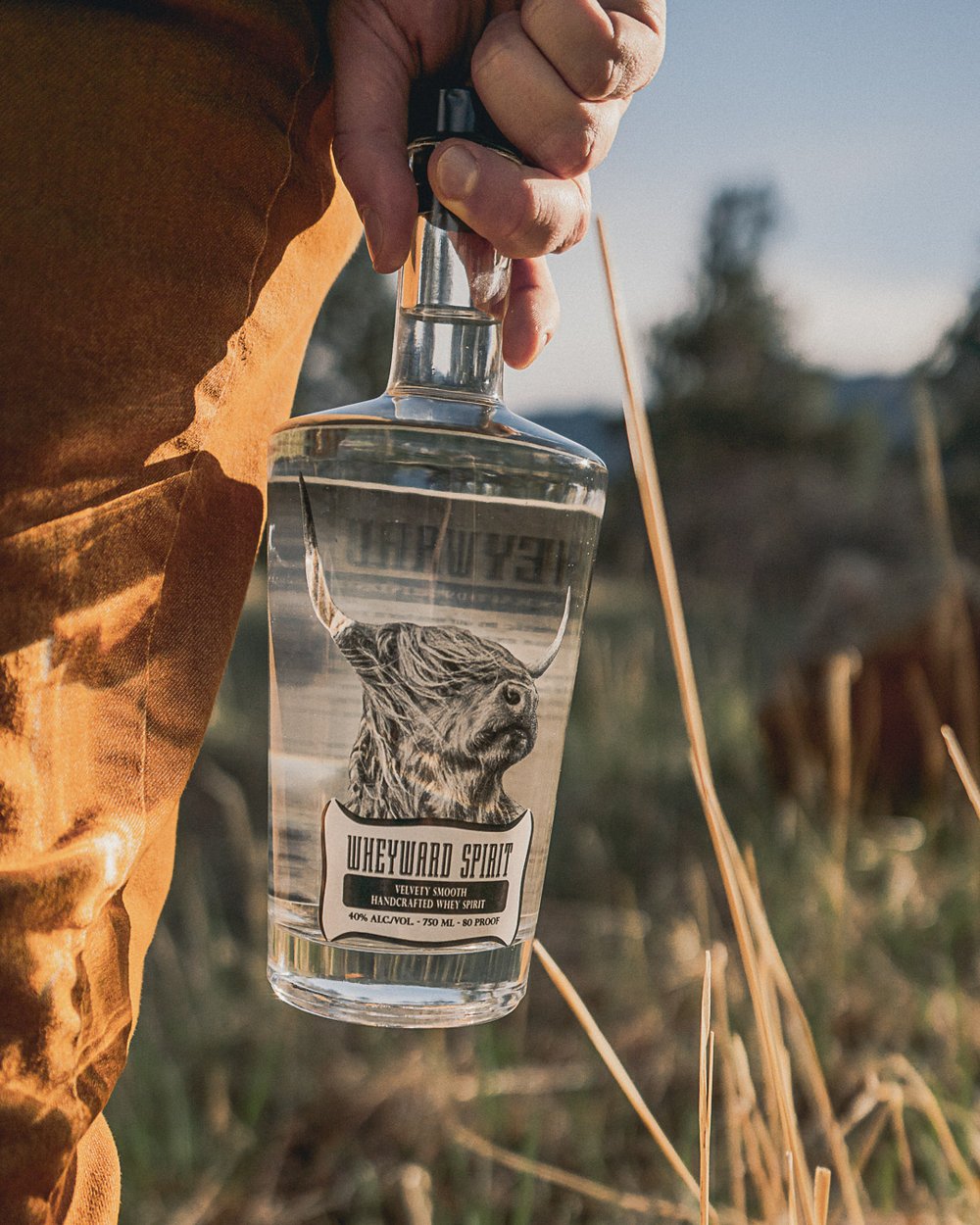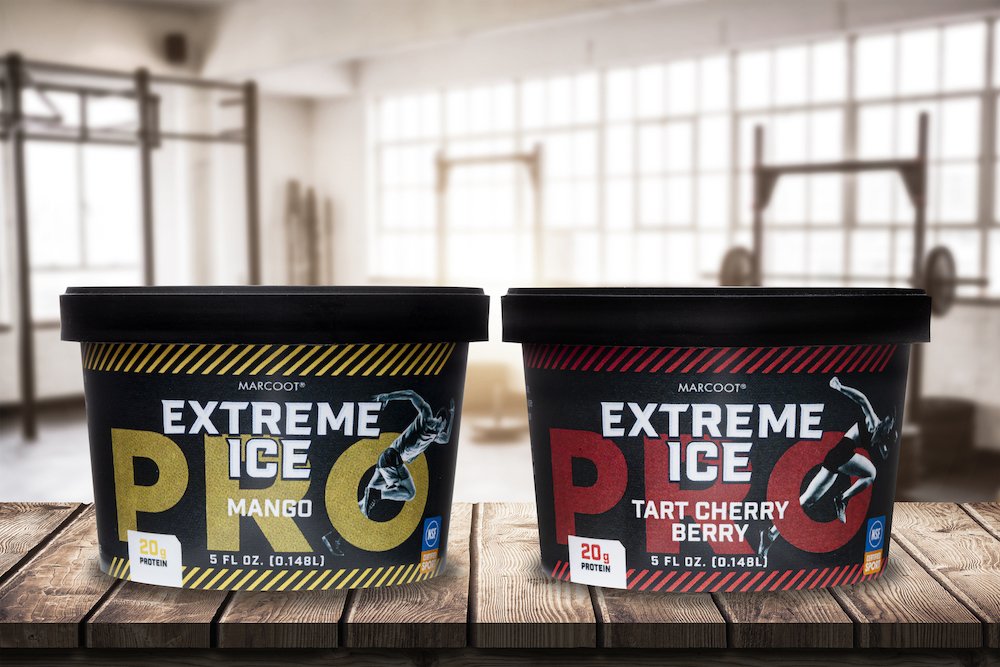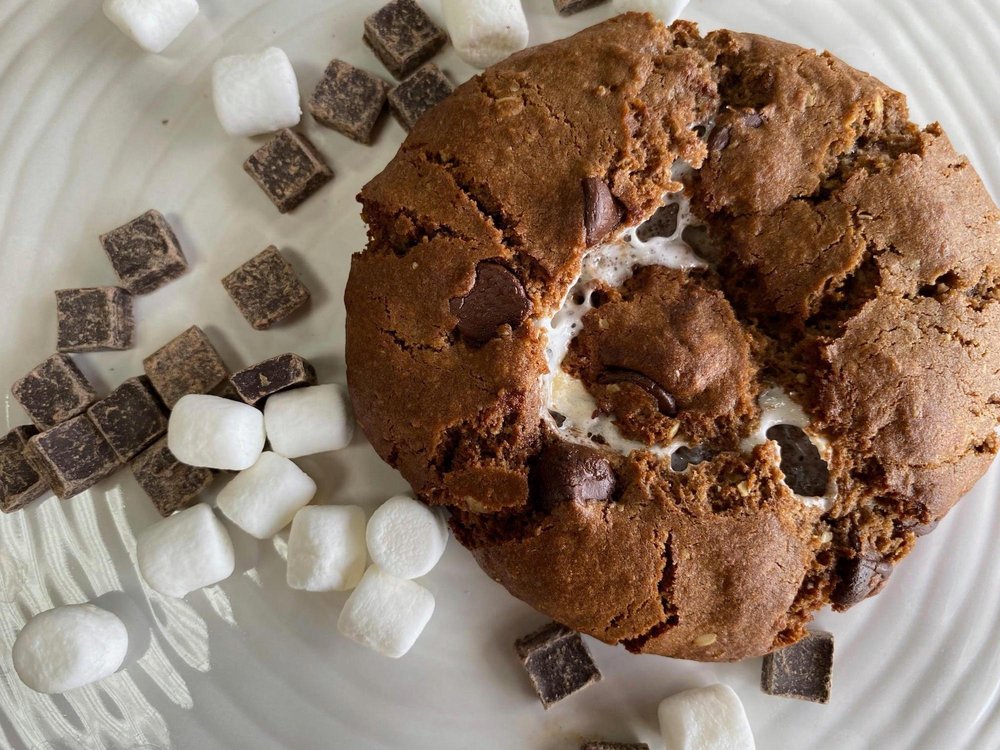
Whey is the milky substance left behind during the cheesemaking process after the curds have been separated to go on to their glorious future as cheese. (In certain instances—as in Norway’s Getost the whey itself goes on to become something like cheese.) The particular challenge for most cheesemakers is one of over-abundance of whey—for every pound of cheese produced, about 9 pounds of whey remain. Because it is so rich in protein and relatively flavorless, a lot of whey gets shipped off to get converted into protein powder, but that’s often only feasible for dairies who belong to cooperatives, who produce a large enough volume to warrant whey collection, or who have their own resources for transporting whey to processing plants. Otherwise, dairies can recycle the whey back to feeding their herds, but much of it, sadly, end up discarded.
Wheyward Spirit, Marcoot Extreme Ice, and Whey Better Cookie Company are three companies whose sources of whey and resulting products are very different, but whose goals are similar: putting whey to use in unique methods to showcase its capacity beyond simple inclusion in protein smoothies. The three founders profiled here have 3 very different relationships with the dairy industry, but all demonstrate creative approaches for utilizing whey.
Wheyward Spirit

Wheyward Spirit’s founder, Emily Darchuk, is a food scientist who was specifically interested in addressing the sustainability aspect of whey within the dairy industry, while creating a product that had high consumer appeal. “I really asked myself—what can I do?—to not see this as waste but really bridge a gap in the food system,” she told me.
Partnering with several Northern California dairy cooperatives to collect their excess whey, the result of her efforts is Wheyward Spirit: a clear, neutral, versatile spirit distilled from the whey. (No dairy protein remains after distillation, so it is considered dairy-free, though it certainly makes for a terrific milk punch.) Because Wheyward Spirit isn’t made from grains or fruit, it defies categorization into typical boxes like vodka or eau-de-vie, but instead is considered a specialty spirit. It can be used or drunk in much the same way as you would drink other clear spirits such as vodka, tequila, or rum—over ice with a twist of lemon, or made into cocktails. While its flavor is neutral, it has an appreciable weightiness that nods to its dairy origin.
For the full story on Emily Darchuk and Wheyward Spirit, see Wheyward Spirit Turns Dairy Waste into Liquor That’s Way Cool on Alcohol Professor.
Marcoot Extreme Ice

In 2009, sisters Amy and Beth Marcoot had made the decision to take over their family’s multiple-generation dairy farm and convert it into a cheesemaking operation, Marcoot Jersey Creamery. Within a year they were able to move the family business from being simply a milk supplier to one that made and sold their own cheeses, but along with that move came the aforementioned trouble with the volume of whey that many cheesemakers face. Located in Greenville, IL, their family farm was too far from processing plants to make transporting the whey viable. Some of it went back to feeding their Jersey cattle herd, but there was still more of it than they initially knew what to do with.
But along with the can-do attitude that inspired them to make cheese in the first place, came a determination to manage the whey in such a way that was lucrative: “We looked all across the spectrum at the different ways people were using whey,” Amy Marcoot says. “Human consumption is the most valuable, and there’s nothing else out there like (Extreme Ice.)”
Capitalizing on the nutrient-dense nature of whey, they added fresh fruit and churned it into an Extreme Ice, an icy, fruity treat resembling Italian ice, but with a whopping 20 grams of protein per serving. Extreme Ice Pro is a similar take but marketed to athletes as a post-workout recovery snack, as whey is also a quickly digestible protein source. Flavors include Strawberry, Mango, Strawberry Banana, and Tart Cherry Berry, and are available at their creamery and at supermarkets throughout the greater St. Louis area.
For the full story on the Marcoot Sisters and Extreme Ice, see Making Whey with The Marcoot Sisters ere on Cheese Professor.
Whey Better Cookie Co.

Entrepreneur and baker behind Brighton, Michigan’s Whey Better Cookie company, Keri Hayes, is a sports marketer turned personal trainer who lamented a lack of protein-forward snacks that were actually delicious. “Clients would ask me to recommend different foods, and I learned that grab-and-go treats were high on their list, but personally I didn’t care for any of them,” she says. “They took out all of the ingredients that make a treat delicious.”
So she endeavored to create something of her own, focusing more on what she could add to delicious cookies to transform them into protein powerhouses, rather than what she should remove to make them “healthy.” “I believe in moderation and not strict dieting,” she says. “Let’s enjoy a cookie once in a while.” Whey was the answer. While Hayes is using conventional whey powder for her whey-infused cookies, which she sources from DotFit, she is nonetheless successfully demonstrating the brilliant use of whey for its application in baking, and not just for goods intended for bodybuilders.
Her giant cookies—in classic flavors such as Oatmeal Raisin and Chocolate Chip, and gourmet flavors such as S’mores Overload and Seaside Caramel— clock in with about 30-36 grams of protein per cookie thanks to the simple inclusion of whey powder.
But do they taste like some sort of protein-laden product? No—they taste like heaven. I’m speaking from personal experience, but this is also evidenced by the fact that what began as a home-baking service she offered to clients quickly turned into a brick-and-mortar store. Following the success of the cookies, Hayes also experimented with adding whey to other treats, and now offers whey-infused cheesecake, southern banana pudding, and peanut butter cups, as well as the namesake cookies.
For a deeper understanding of the cheesemaking process and its component parts, see From Milk to Wheel: Cheesemaking 101.
